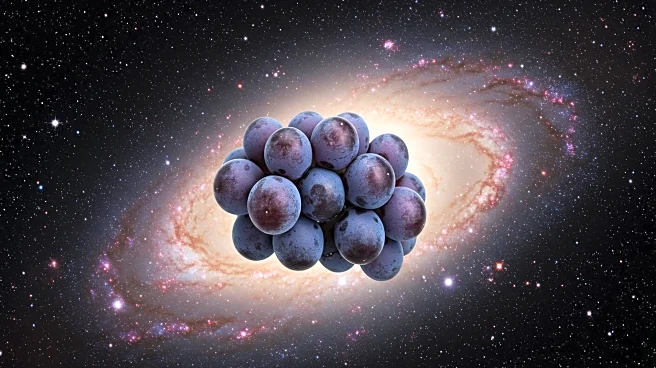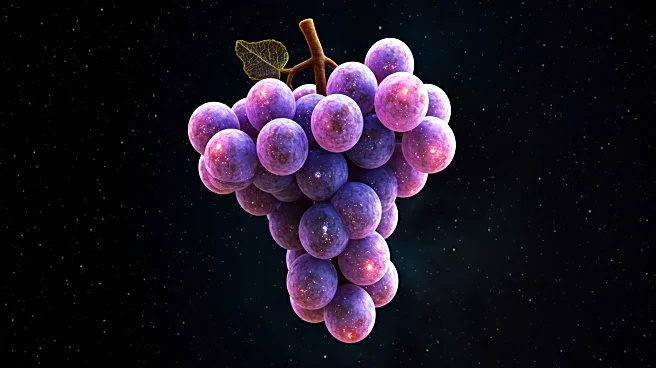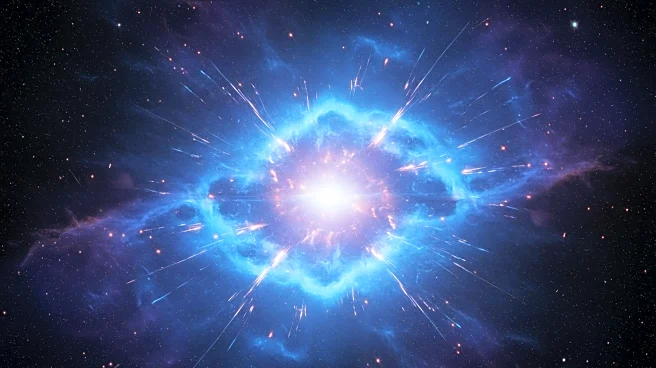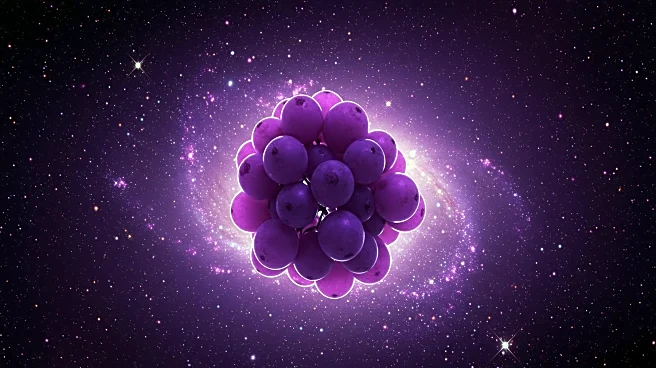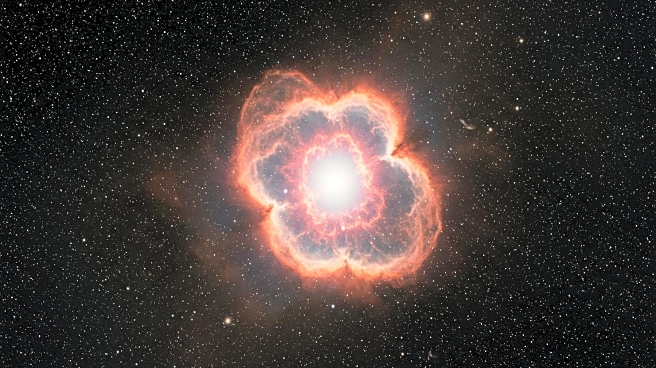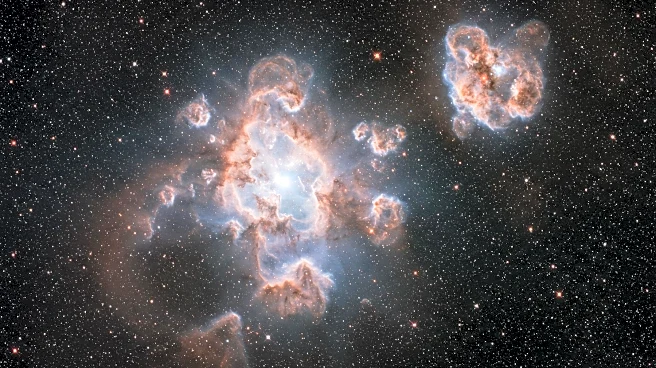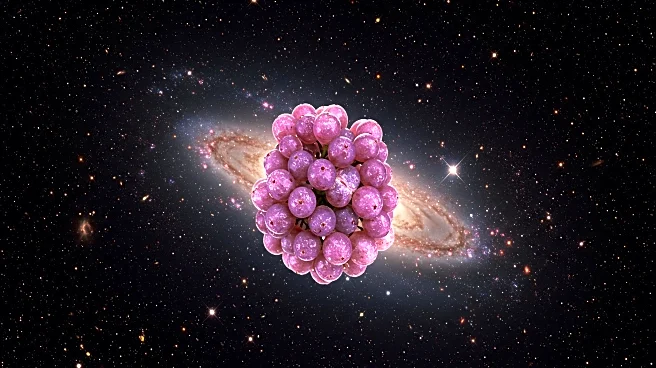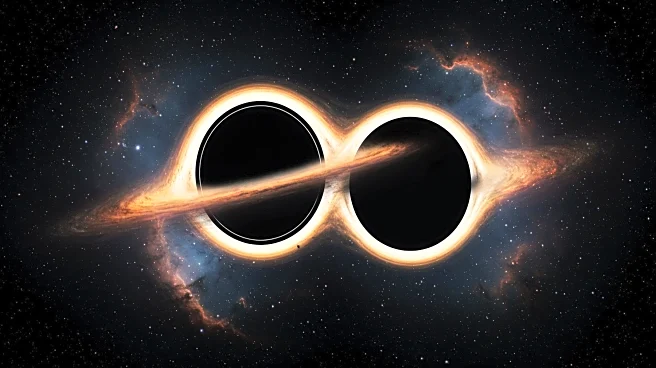Rapid Read • 7 min read
A red supergiant star, DFK 52, located in the Stephenson 2 star cluster, has expelled the largest cloud of gas and dust ever observed from such a star. This discovery was made using the Atacama Large Millimeter/submillimeter Array (ALMA) in Chile. The cloud, stretching up to 1.4 light-years across, suggests the presence of a hidden group of stars contributing to its growth. DFK 52, similar to the well-known Betelgeuse, is undergoing a phase of mass loss, a process not fully understood by astronomers. The star's mass loss is more extreme than typical for red supergiants, with the expelled material moving at varying speeds, indicating a complex mass loss mechanism.
AD
The findings about DFK 52's mass loss challenge existing theories about red supergiants and their evolution. Understanding these processes is crucial as these stars eventually explode as supernovae, significantly impacting their surrounding environments. The study of DFK 52 could provide insights into the lifecycle of massive stars and the dynamics of mass loss, which are pivotal in understanding stellar evolution and the chemical enrichment of galaxies. The unusual mass loss pattern observed in DFK 52 could lead to a reevaluation of how red supergiants behave before going supernova.
Further research is needed to understand the mechanisms behind DFK 52's mass loss. Astronomers may focus on identifying potential companion stars that could influence the mass loss process. Additionally, continued observations with advanced telescopes like ALMA could help unravel the complexities of the circumstellar material surrounding DFK 52. These studies could enhance our understanding of stellar evolution and the role of massive stars in the cosmos.
AD
More Stories You Might Enjoy


